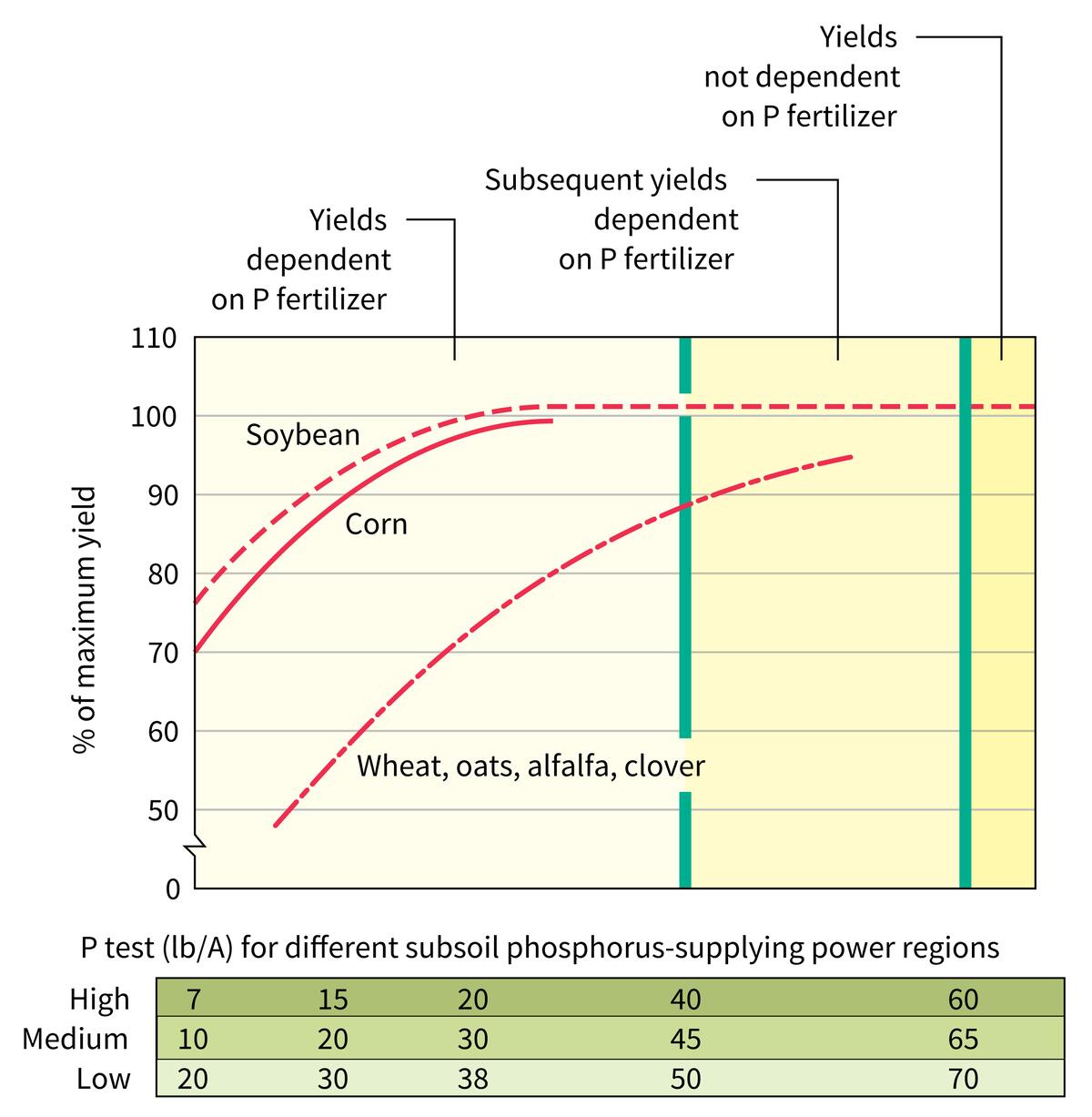What soil tests are used to determine potassium (K) levels?
Historically, the ammonium acetate test has been the recommended test of the Illinois Agronomy Handbook. The Mehlich-3 extraction has become the industry standard and is used by most soil test services. Additionally, the Mehlich-3 extractable K test values are well correlated to ammonium acetate K values.
What influences potassium levels in Illinois soil?
Soil K levels are influenced by several factors. A primary factor is a soil’s cation exchange capacity (CEC), which is a measure of the amount of attraction between soil particles and several positively charged plant nutrients, including K. On a soil test, you will likely see your CEC value followed by “meq/100 g”, which means milliequivalents per 100 grams of soil. Do not let this unit of measurement confuse you. What is important to know is that a higher number means your soil can hold on to more positively charged plant nutrients.
Soil CEC is influenced by the amounts of clay, types of clay, and amounts of organic matter in the soil. Other influences of soil K include the parent material of a soil, how much that soil material has been weathered and depleted of its K over time, and the drainage and aeration of a soil, which influences K uptake by plants.
Soil K can be lost through erosion, run-off, leaching through tile drainage, and removal by a harvested crop. Each bushel of corn removed from a field will take with it approximately 0.24 lbs. K2O per acre, while each bushel of soybeans contains approximately 1.17 lbs. K2O per acre. This is often referred to as the “removal rate” of a crop. This is important because by knowing how many bushels were removed from a field, you can calculate how much K is needed to be added back. However, keep in mind that the values in the table below are estimates based on a distribution of observed actual removal rates (check out this article for more information). Specifically, removal rates reported in the table below are based on the 75th percentile of the distribution of observed actual values, which means that about ¾ of the tested samples had removal levels lower than what is reported in the table. This removal rate was chosen to reduce the likelihood of soil fertility dropping below the critical threshold for K (or P) when farmers are relying on calculations to determine their fertilizer application rates. And therefore, it is still important to test soils regularly and adjust maintenance rates accordingly.
| Crop | P2O5 (lbs./bu.) | K2O (lbs./bu.) |
|---|---|---|
| Corn | 0.37 | 0.24 |
| Oats | 0.38 | 0.20 |
| Soybean | 0.75 | 1.17 |
| Grain sorghum | 0.42 | 0.21 |
| Wheat | 0.90 | 0.30 |
In the figure below, soils that have a CEC lower than 12 meq/100 g are defined as “low,” while soils with a CEC generally higher than 12 meq/100 g are defined as “high.” Sandy soils tend to be low in K due to low CEC and inherently low K in the parent materials of these soils. In other words, there is less K to start with, and K fertilizer is not ‘held on to’ by the soil very well. Soils in much of southern Illinois are older and have had much of their K leached out of the rooting zone. Additionally, these clay-pan soils tend to have a fragipan layer and are poorly drained, which may influence plants’ ability to uptake K through their roots.
How do I decide how much potassium to apply?
The amount of K that needs to be applied depends on the crop you intend to plant, the removal of last year’s crop, the CEC of your soils, and the results of your soil test. For grain crops (corn, soybeans, wheat, and oats) and forages (alfalfa and clover) commonly grown in Illinois, a minimum soil test value of 260 lbs. K per acre is recommended for low-CEC soils, or 300 lbs. K per acre for high-CEC soils. Maintenance fertilizer (yield x removal rate) is needed if soil K values are between 260-360 lbs. per acre in low-CEC soils and 300-400 lbs. per acre in high-CEC soils. To build up K in deficient soils in Illinois, it takes roughly 4 lbs. of K2O per acre to increase soil test K by 1 lbs. per acre. However, some soils have shown resistance to buildup of K, and in these soils, it can take much more K2O than 4 lbs. to increase soil test K by 1 lbs. per acre. If records indicate that is the case for your soils, it is recommended to apply K fertilizer annually. If historical soil test levels show resistance to buildup and are below the suggested minimum, apply K fertilizer at a rate 1.5 times that of expected removal (expected yield x removal rate).
When can I skip the fertilizer?
Potassium fertilizer is generally not needed if soil K values are greater than 360 lbs. per acre in low-CEC soils and 400 lbs. per acre in high-CEC soils, unless crops that remove large amounts of K, such as alfalfa and corn silage, are being grown. In a standard corn/soy rotation, applying K fertilizer to soils that test at >400 lbs. K per acre is generally not economically beneficial. Some farmers may choose to build up soil K to this high threshold level, then apply maintenance fertilizer every other year for the preceding two crops to aid in operational efficiency, reduce income in highly profitable years, or take advantage of favorable prices. The primary disadvantages of this approach are high costs during the buildup period and potential for loss of this nutrient through leaching, runoff, or erosion.
Access the Full Chapter
Contributors

Talon Becker


